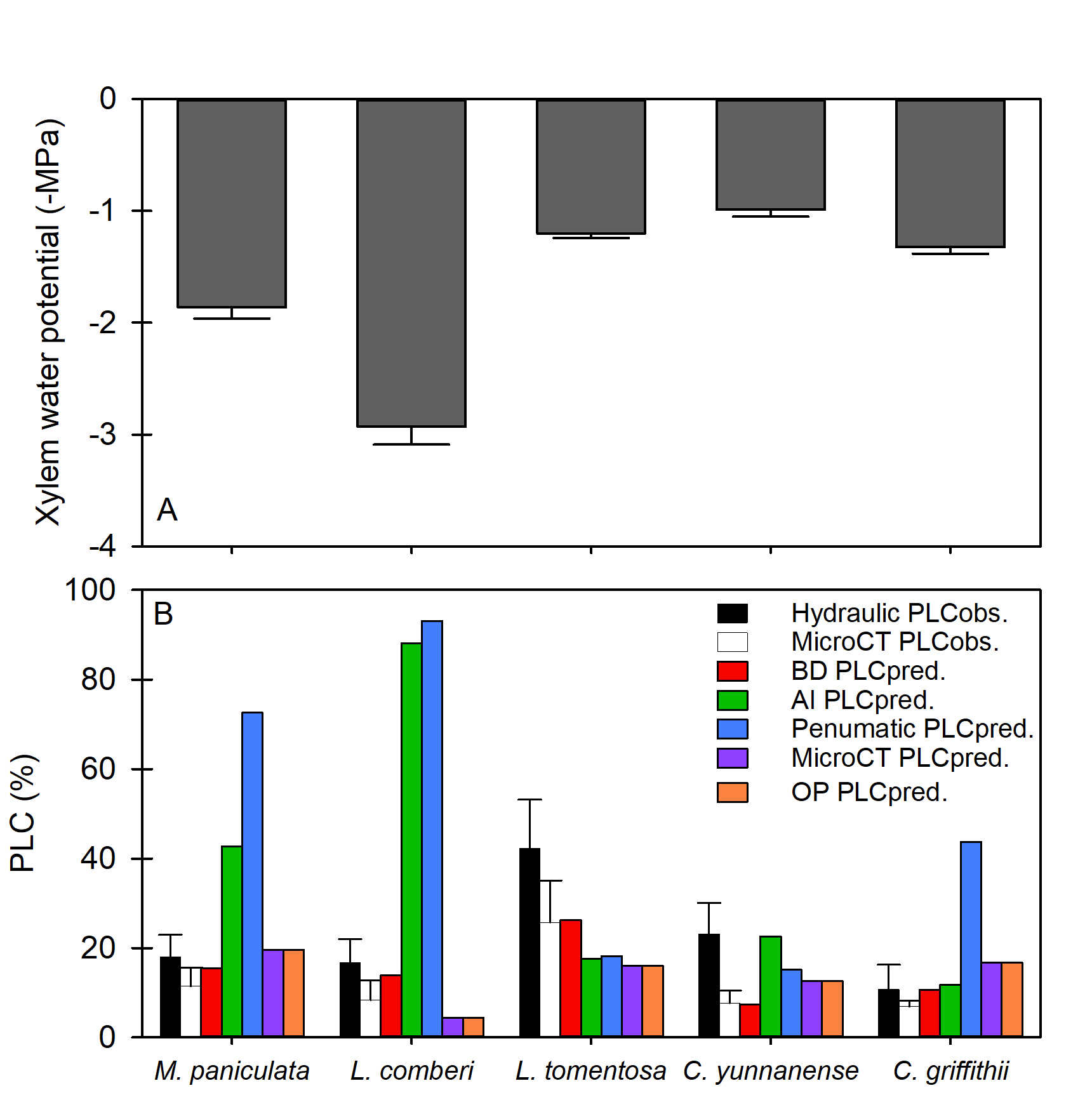Predicting the impact of drought events on plant survival and distribution patterns requires a detailed understanding of the mechanisms underlying drought-induced tree death. The xylem pressure at 50% loss of stem hydraulic conductivity (P50) is a key hydraulic trait widely used to estimate the xylem embolism resistance, hence one of the central interests in plant physiology and ecology.
Xylem resistance to embolism is often determined by vulnerability curves (VCs) which describe the loss of hydraulic conductance against increasing xylem tension. Although methods for constructing VCs have been continuously developed or modified, there remain controversies about the reliability of different methods.
In a study published in New Phytologist, researchers from Xishuangbanna Tropical Botanical Garden (XTBG) quantified how different techniques affected the generated VCs. They tried to reveal the underlying artifacts or biases in some techniques when applied to long-vessel tropical plants. They further wanted to explore whether the application of some techniques is species-dependent, and can be explained by differences in xylem anatomy.
The researchers firstly determined the VCs for five tropical woody species with contrasting vessel-lengths using five techniques, including the bench‐top dehydration (BD), air‐injection‐flow (AI), pneumatic‐air‐discharge (PAD), optical (OP), and X‐ray‐computed microtomography (MicroCT) methods.
They found that the VCs generated using the bench-top dehydration (with tensions relaxed before hydraulic measurements), the Micro-CT and the optical methods were generally similar and could predict the performance of the plants in the field. In contrast, the air-injection-flow and pneumatic-air-discharge methods showed a number of uncertainties.
Afterwards, they determined the native embolism in the field and compared this to predicted values derived from the VCs constructed by different techniques and xylem tensions. They also tested whether the discrepancies in results from different methods were species-dependent and could be explained by the differences in xylem structural traits.
The overestimation of vulnerability to embolism, predicted by vessel size, occurred for the air-injection-flow method, but the uncertainties associated with the pneumatic-air-discharge method can result in either an overestimate or underestimate of the vulnerability.
“We validate the BD, OP and MicroCT methods for tropical plants, while the PAD and AI need further mechanistic testing. Therefore, applications of VCs in estimating plant responses to drought need to be cautious,” said Dr. CHEN Yajun, first author of the study.
Contact
ZHANG Jiaolin Ph.D Principal Investigator
Key Laboratory of Tropical Forest Ecology, Xishuangbanna Tropical Botanical Garden, Chinese Academy of Sciences, Mengla, Yunnan 666303, China
E-mail: zjl@xtbg.org.cn

The relationships between xylem structural traits and the discrepancy ratios of P50-PAD and P50-AI against P50-MicroCT. (Image by CHEN Yajun)

